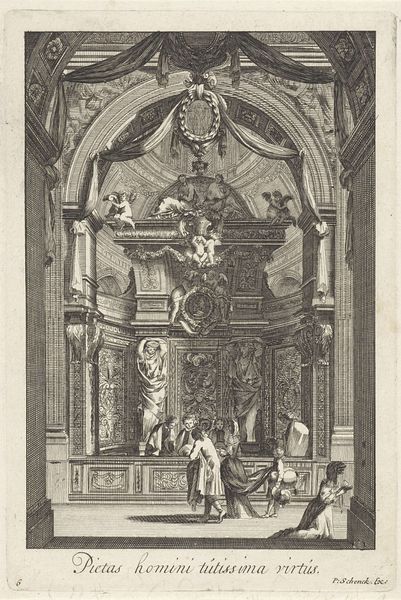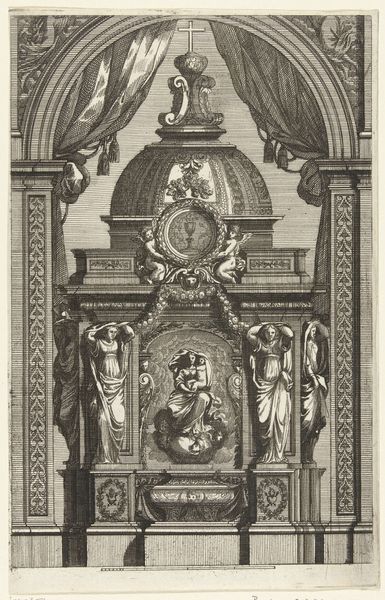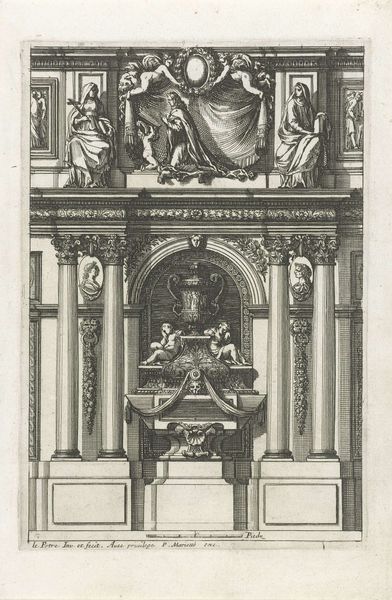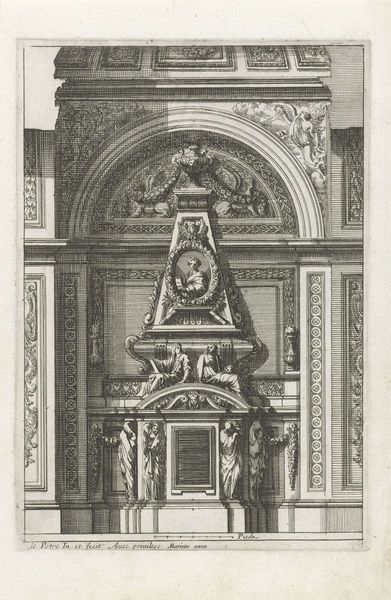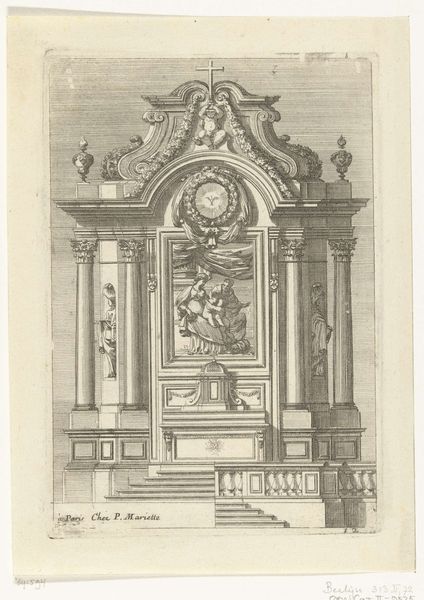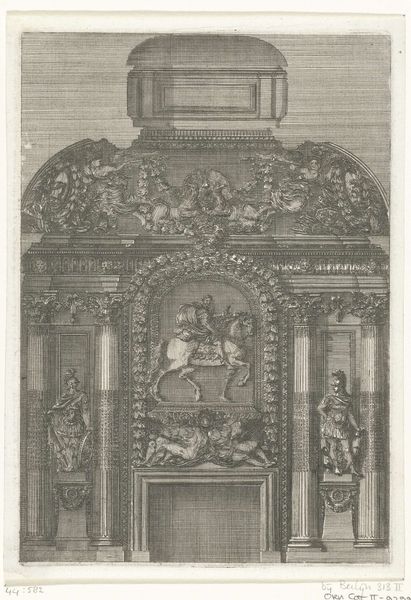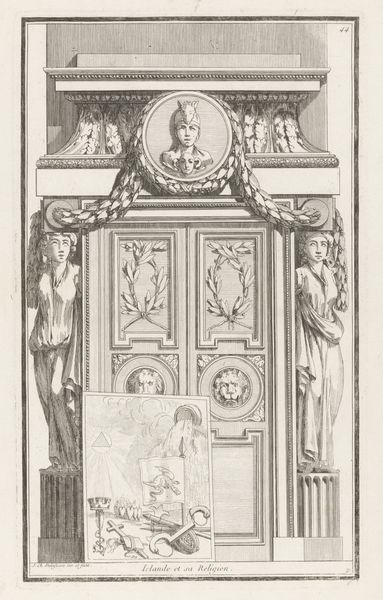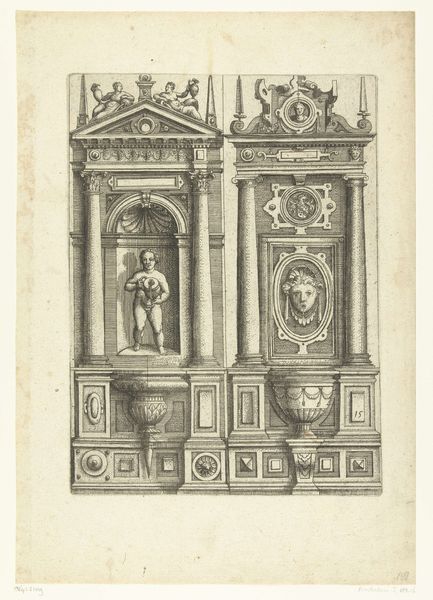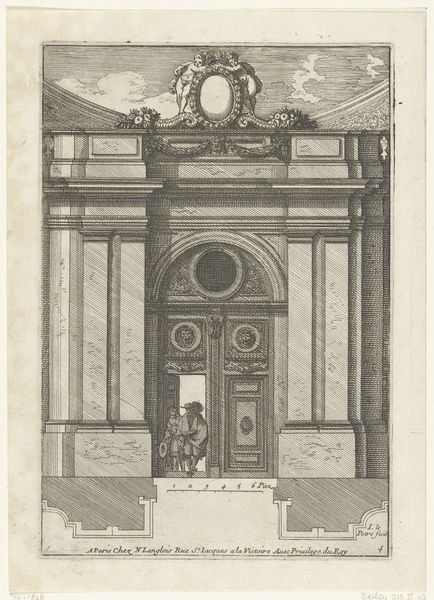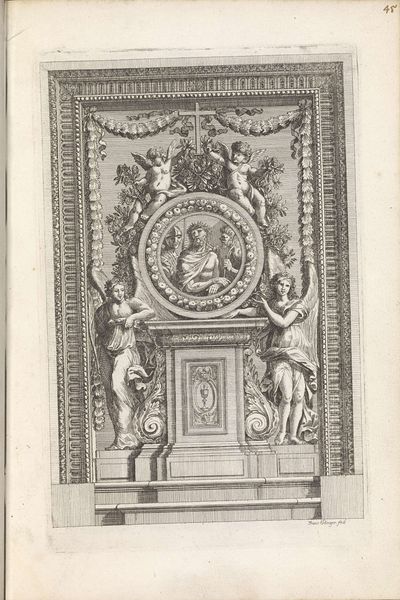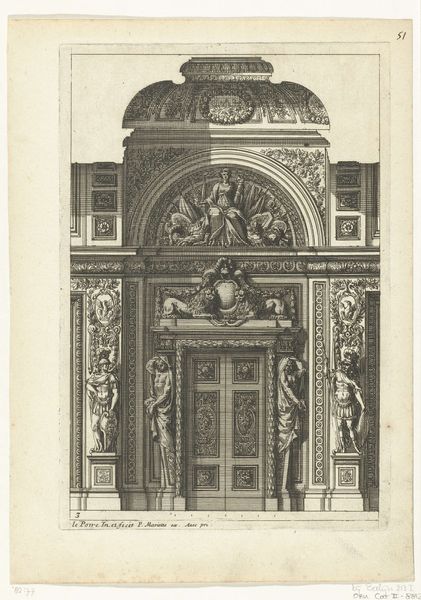
print, engraving, architecture
#
baroque
# print
#
figuration
#
engraving
#
architecture
Dimensions: height 224 mm, width 152 mm
Copyright: Rijks Museum: Open Domain
Editor: This is *Kapel met beeld van de Maagd*—Chapel with statue of the Virgin—an engraving by Jean Lepautre from around 1658 to 1670, currently residing at the Rijksmuseum. The intricate details are remarkable. What layers do you see within it? Curator: I see this piece as a visual representation of power and faith intertwined. Consider the Baroque period's emphasis on dramatic expression and religious authority. How does this chapel design serve as propaganda, reinforcing the church's influence and legitimizing the social hierarchies of the time through artistic patronage? Note the composition, the idealized figures of saints flanking the Virgin, and how the architecture frames the subject within a carefully constructed, symbolic narrative. What ideological messages might Lepautre be embedding here? Editor: I guess I hadn't considered the propagandistic element. I was mainly admiring the ornamentation! But I see what you mean about its symbolic narrative. The strategic visual construction almost overrides any personal, subjective spirituality, wouldn’t you say? Curator: Precisely! It invites questions about who had access to these images, and what they were intended to feel or internalize. This wasn't necessarily about individual piety; instead, it reflects the collective cultural project of constructing and maintaining specific ideas around morality and power, and, I believe, reveals assumptions about class and gender within religious and social spheres of that era. How might feminist theology interpret the placement and depiction of the Virgin Mary in this engraving, especially when contrasted with surrounding figures or symbolism? Editor: That’s definitely a perspective shift for me. I’ll definitely look at Baroque art differently now, considering who it served politically, not only religiously. Curator: The purpose of engaging with the arts is not just in knowing more about historical trends, it is also understanding our evolving society. Editor: I've learned so much from unpacking the cultural and power dynamics within this one print.
Comments
No comments
Be the first to comment and join the conversation on the ultimate creative platform.

